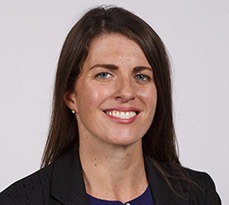That’s not to say there aren’t female success stories; from Whitney Wolfe, founder of Bumble and the youngest woman ever to take a company public, to Jennifer Biscegli, founder of software company Interos – which hit the US$1 billion ‘unicorn’ mark in December – it’s not only men achieving billion-dollar status.
But these examples remain the exception rather than the rule. Across the globe, only 12% of companies that were minted as unicorns in the first half of 2021 had female founders or co-founders, according to Crunchbase, while in the UK, just 4% of the fastest-growing tech startups last year were founded by women, according to coding platform CodinGame. Of the top 100 companies on the Forbes Global 2000 list last year, a mere 2% had female founders.
Fewer female founders?
Some have argued women just aren’t founding as many businesses as men – a study by the Tinbergen Institute, ‘Seeing the World with Different Eyes: Gender Differences in Perceptions and the Propensity to Start a Business’, for example, suggested women were less likely to want to launch a venture due to societal factors leading to lower levels of confidence and higher fears of failure. Other barriers often cited include fewer women working in tech (and studying STEM subjects that can lead to those opportunities), and fewer chances to gain leadership experience.
But that’s only one side to the story. Appetite is there; in Europe, women represent nearly a third of entrepreneurs, according to MDPI, while in Latin America and the Caribbean, that number rises to 50%. Next Insurance found that in the US – where 42% of business are female-owned, according to American Express – women were more than twice as likely to start a small business in 2020 than men on the back of the pandemic.
Issues with scaling

The bigger problem, then, appears to lie in scaling rather than founding. And that’s down to several reasons, according to Priyanka Agarwal Mehta, founder of children’s book publisher Sam and Mi, and founder of Rongo, an app that provides information to farmers in India. Priyanka graduated from the MBA programme at Cambridge Judge Business School in 2015, before founding education network Connect2Teach in 2016.
“When you start scaling, you need a bigger team, you need more hands to help you manage the team, you need more of a network to start managing your customers, and you need more mobility to be able to travel for work or access opportunities,” she says. “All of these things can be a challenge as a woman. Mobility can be harder for women if they’re managing a family – and with the average age of founding a business in the 30s, entrepreneurship often goes hand in hand with motherhood. I think more government support and infrastructure is needed for women balancing entrepreneurship and family pressures.”
Access to funding
There are other obstacles too. One of the biggest barriers when it comes to scaling up is funding. According to Crunchbase, just 2.3% of venture capital in the US went to female entrepreneurs in 2020.
A study by Harvard, MIT and Wharton found that VC pitches from a male voice were more than twice as likely to be successful as getting funding than investors with pitches from a female voice.
The underrepresentation of women among investors doesn’t help. According to Highline Beta’s Women in Venture Report 2019, only 13% of partners at American VC firms were female. If those numbers were to go up, investment in female-founded startups might do too; research by Kauffman Fellows revealed that women VCs invested in twice as many female-founded startups as male investors.

Sarah Broderick, co-founder of client meeting platform Connect4 and a 2015 graduate on the MBA programme, believes progress has been made on this front. “I’ve recently been looking at the venture capital space in particular, and I’m happy to see that it’s finally starting to catch up in terms of gender parity, with so many female principals of funds now,” she says.
“I was having a conversation with an angel investor recently who said they were actively looking for people with a more diverse mindset, and not just people that looked like them. I think we’ve seen a lot more of that in the past five years. And I think it’s really important for people in the early-stage startup space to have investors who aren’t just one gender, with one type of experience and educational background. I think having people with different perspectives helps break down barriers and open up more opportunities.”
The old boys’ network
Women-led investment firms such as Broadway Angels and Angel are indeed helping to break down those barriers, while accelerator programmes – including the all-women Hatch Female Founders – can provide an alternative source of funding.
Other efforts are also being made to improve the situation; Innovate UK launched its Women in Innovation programme in 2016 to encourage female-led innovation through funding competitions and events, leading to a 70% increase in grant applications by women.
But Agarwal believes it’s less about female investors funding female founders, and more about widening networks generally.
“I think when you’re investing in an entrepreneur, it’s about understanding the entrepreneur’s vision,” she says. “Just because you and I are both women, it doesn’t mean you’re going to get my vision – my vision might align better with a man sitting somewhere who’s experienced something similar to what I’ve experienced.
“But the problem is, I haven’t actually been able to connect with that person, either because the network is broken, or the support system to get me to them is broken.
“Networking is geared towards men. We’ve called it the old boys’ club for so long, but it really is like that. And for entrepreneurs, networking is crucial – that’s how you raise money, that’s how you get contracts, and that’s how you get introduced to customers. So that can be a huge challenge for women, and I think instead of focusing on female VCs funding female startups, we should be looking at building better networks and support groups.”
Finding peer groups
Groups such as Female Founders, designed to put women entrepreneurs in touch with VCs, can help bridge those connections.
Broderick says having a strong peer support group around is also critical to success. “I have a solid group of peers who I consistently talk with, about goals, problems, aspirations,” she says. “They all have their own experiences, and it’s really fascinating to listen to them. Any network of people that have an interest in bringing and sharing knowledge is hugely beneficial.”
She also recommends finding a mentor – something women entrepreneurs can struggle with (48% of female founders cite a lack of available advisors and mentors as a barrier, according to Inc).
“A mentor doesn’t have to be someone older, with tons of experience,” she says. “The mentor could be someone who’s younger or a peer. Go and look for the people who are doing things that you think are impressive. It’s also one of the best ways to be able to understand if your product is a strong enough idea.”
Peers can also work as role models – something we need more of, according to Agarwal. “I think role models are important regardless of what you’re doing,” she says. “I think when you see someone who’s like you doing something, you just feel it’s more believable you can do it too.”
Changing the conversation
But getting those female role models in the first place is where the challenge lies. Men dominating leadership positions in the big-name companies creates a self-perpetuating circle – and one we can only break through systematic change, says Agarwal. She believes that hinges partly on being able to show the economic value of having female founders.
“I think one thing that is often missing from the conversation is, why do we need female entrepreneurs? What are we losing by not having female entrepreneurs in the system? And I think only when the answer to that question is understood on an economic level, will we actually see a rise in the support systems needed to make this a successful journey.”
Those economic benefits are there; McKinsey’s ‘Diversity Matters’ research showed that reaching gender parity in business could add US$12 trillion to the global economy.
A study by Boston Consulting Group and MassChallenge meanwhile found that for every dollar of investment, female-led startups generated a 78% ROI, while their male-founded counterparts generated an average of 31%. And according to BCG, startups founded and co-founded by women generated 10% more in cumulative revenue over a 5-year period than those founded solely by men.
Of course, the true marker of gender parity will be when we can talk about entrepreneurs and business leaders without needing to pit men against women, male against female.
But that relies on an ongoing push for more women in tech, more women in venture capital and more women in business leadership to help balance the scales, break down the barriers and challenge the male/female perceptions that have for so long dominated the conversation. Only then can we talk about entrepreneurs in their own right, rather than on the basis of their background, skin colour or gender.
Entrepreneurship at Cambridge
At Cambridge Judge, entrepreneurship is in our blood. Discover entrepreneurship at Cambridge Judge Business School and the wider University, and what makes Cambridge a hub for innovation.





